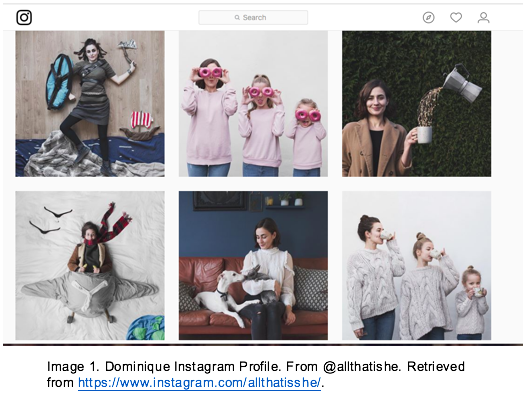Social media – The Root of Pedophilia in the 21st century?
Abstract:
This paper talks mainly about how the main root of pedophilia cases is social media. The first part of the paper explains what social media is, its use, how it has brought change to the world, what makes social media a boon in the eyes of the world and how it is useful in the modern era. The second part of the paper explains what identity is, the definition of online identity, the main aspects that make online identity and authenticity of identities on social media. Online identities are important in this paper as much as social media is, due to the fact that its different aspects will appear in several parts the main content discussed. Later comes a paragraph about what pedophilia is. And then the main content is discussed, that is, how social media is the main platform that leads to pedophilia cases. The discussion shows how pedophiles make the use of social media as a bait and how young adolescents are irresponsible.
Social media, its use, changes brought to the world and aspects that make social media make social media a boon in the eyes of the world:
The most common definition of social media is that social media are platforms that simplify the sharing of data, thoughts, career interests and communication in the form of text or video conference through the official website or apps (Lomborg, 2015). The content shared are user-generated content and they can be in the form of written posts, photos, videos or a mixture of all three (Lomborg, 2015). Currently, the most common social media platforms known and used are Facebook, Twitter, Instagram, Snapchat and WhatsApp (Lomborg, 2015). In today’s life, social media is one of the most useful tool present in the world. In fact, except for babies and war-affected countries, the majority of the world’s population are at least on one social media platform.
The main use of social media that is most commonly known is to communicate with closed ones through written text, through visuals and video conferencing (Lomborg, 2015). For youngsters in particular, the main use of social media is to make new friends that can be their potential dates (Lomborg, 2015). Through years, however, the use of social media has been extended for marketing and journalism purposes. Existing and new businesses get to make themselves known, get to promote easily their content or announcements or events through sponsored posts (Lomborg, 2015).. They even get the chance to attract new potential stakeholders due to the huge number of reach that social media provide to them. (Lomborg, 2015). Existing and new news outlets use social media to get maximum reach as when they share their content, hashtags and the massively huge number of users increase their reach (Lomborg, 2015). These are what make social media a boon, in the eyes of the society (Baym, 2015).
Online Identity
Online identity is a very important aspect in this paper. Before explaining what online identity is, the meaning of identity will be first discussed. When it comes to human beings, identity is about their names, ethnicity, abilities, looks, traits, beliefs and expressions, that is, all the factors what demarcate themselves from others (“What is Identity?”, 1991). For organizations or groups, identity is all about their worth and unique features or reputations that build up their image in society, be it a good one or a bad one (“What is Identity?”, 1991). Online identity is what makes an online user on social media or online gamer unique from the other users or gamers. That is, online identity is about the information and reputation of a user online such as the users’ names on social media or games, type of avatars created in games, the strategy he or she uses and their number of victories or their streaks, etc (Stewart, 2011). The aspect of online identity will appear in the coming paragraphs.
Pedophilia
Pedophilia is a mental disorder where an adult feel himself or herself sexually attracted to children and adolescents (Rowan, 1989). A person having this illness is called a pedophile. The meaning of a pedophilia case is where a pedophile manages to acquire his or her prey, where a pedophile gets the chance to call and meet up for physical relationship (Rowan, 1989). A pedophilia case is also where the pedophile make physical abuse of his or her young prey (Rowan, 1989).
Case study: Pedophilia Cases
These cases currently involve these three aspects from the social media environment; social media features, youngsters and their online identity (Rowan, 1989). These three aspects lead to pedophilia cases in several ways.
- Social media features: Social media’s main involvement in these cases come from its features itself. On social media, multiple identities can be created due to the abilities to totally personify an account other than the own selves of the users (Lomborg, 2015). Not only this, the users can name themselves whatever names they want and save anyone’s pictures (Lomborg, 2015). Through these opportunities, identity is like a wax statue that can be moulded into whoever person that the artist desires (Stewart, 2011).
- Youngsters: The problem of youngsters in these cases is the way they dress and their body languages. Young girls like to look older; girls who are of 13 years of age would probably want to look like Rihanna or Nicki Minaj, just to be attractive enough so that they can get themselves a potential date. Having a boyfriend is a must for young girls simply to be accepted by peer groups, so, not only they copy the flashy clothing of those celebrities but they also copy their ways of walking and also do exercises to develop their bodies into the body of a matured woman, at a quicker rate. If they fail to develop their bodies into the desired body shape, they make use of things such as fake breasts to make their breasts look bigger and to become more of what they believe boys and men like. At the end of the day, they end up attracting male adults where the attraction can be categorized as lust. Hence, this can be seen as a factor which forced a male adult to become a pedophile.
- Online identities of youngsters: Other ways in which youngsters contribute in pedophilia cases are immature attention seeking acts on social media. Youngsters tend to build a much more notorious identity of themselves than projecting their own original identity as a notorious character will only attract more people and will also make them look “cool” in front of their peers. To build this notorious identity on social media, youngsters will mainly share semi-nude pics, posts about sex and media containing adult contents. By doing so, they attract pedophiles as well. Seeing these Medias, semi-nude photos and sexual contents, adults tend to develop some sort of thinking and feeling for the minor which will later most probably turn into lust.
The bullet points above show briefly that social media, youngsters and their online activities contribute into pedophile cases. Now, this case study will support the thesis statement, which is; social media is the root of pedophile cases from the 21st century.
As explained in the first point of the case study, social media allows users to build a totally different and improved self of themselves on the platforms. These features help pedophiles to build a younger identity while creating their account which they will create as bait (Harkins, 2013). The question is how they create a younger identity. The answer is clear and simple. They will create fake accounts and then they will steal young boys’ photos so that they can put them as profile picture, they would then fabricate their age by setting it to 15-18 years of age (Harkins, 2013). Then, they will like all the pages or other contents that young boys like, so as to make the account look a real one (Harkins, 2013). They will also add in their personal information that they are currently attending a specific college (Harkins, 2013). After setting up the account, they will start to add people that are attending the college that they are supposedly attending (Harkins, 2013). They will then start searching for young girls and send them friend requests (Harkins, 2013). A huge majority of young girls will accept the friend requests, as young girls from this generation need to absolutely have a boyfriend so that they are accepted by peer groups (Stewart, 2011). This is where the real danger starts.
As soon as the friend requests get accepted, the wrongdoers will then start with a very friendly approach (Harkins, 2013). They will talk about their school life, lie about a couple things such as they have a huge financial stability so that the victims are more attracted to them (Harkins, 2013). Then, they will share their interests among themselves (Harkins, 2013). Talking to each other regularly will bring them close and the predator will then propose to the girl (Harkins, 2013). If the girl does not have a boyfriend, there will be a huge possibility that the girl will say yes to the proposal (Stewart, 2011). Being her boyfriend, he will probably ask to send nude photos of her and the girl will obviously send him as she will not dare to say no as she will be afraid to offend her virtual boyfriend (Harkins, 2013). And there will be a day that the crook will ask her victim to meet him or her (Harkins, 2013). This will be the day that the girl will come to know the real identity of her so called ‘boyfriend’ and will be too late for her as she will most probably end up being raped (Harkins, 2013). If the girl refused to date the predator, she will still be at risk. The predator, as a friend, will someday or another raise the topic about sex (Harkins, 2013). Young and curious, the girl will also be tempted to talk about it and being close to each other, the offender will ask the girl if she has ever tried ‘this or that’ and will then explain the girl what should she do or try (Harkins, 2013). He might even send her porn videos as samples (Harkins, 2013). And when the naïve girl will say that she tried it, the boy will ask her to send him a picture or video of her doing all these so that he can guide her (Harkins, 2013). Then, after receiving all these explicit contents about the girl, the predator might use them as a weapon (Harkins, 2013). They will blackmail the girl with these media, with the threat that they will spread them all over the internet. They will blackmail the victim to either receive more of these photos and videos or they will use it for money-extortion, also known as sextortion. In fact, once having the power to blackmail the prey, the predator can control the prey and force them to meet up for sex.
Social media platforms should find a way to strengthen the security of the society and the communities built on their platforms. The best way they can ensure security is to add more account confirmations such as ID Number or National transport ID Number instead of integrating only mobile phone number confirmation (Lomborg, 2015). If these security measures are put into practice, pedophilia cases will be decreased as pedophiles will not be able to create fake accounts or steal identities of others.
As a conclusion, it can be deduced that despite the fact that social media is seen as a boon, social media is also a cause of dangers such as pedophilia to the society. Social media is well and truly the root of pedophilia cases in the 21st century.

















